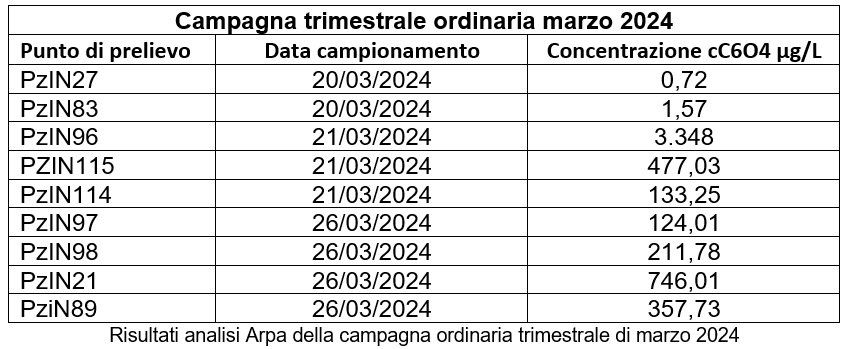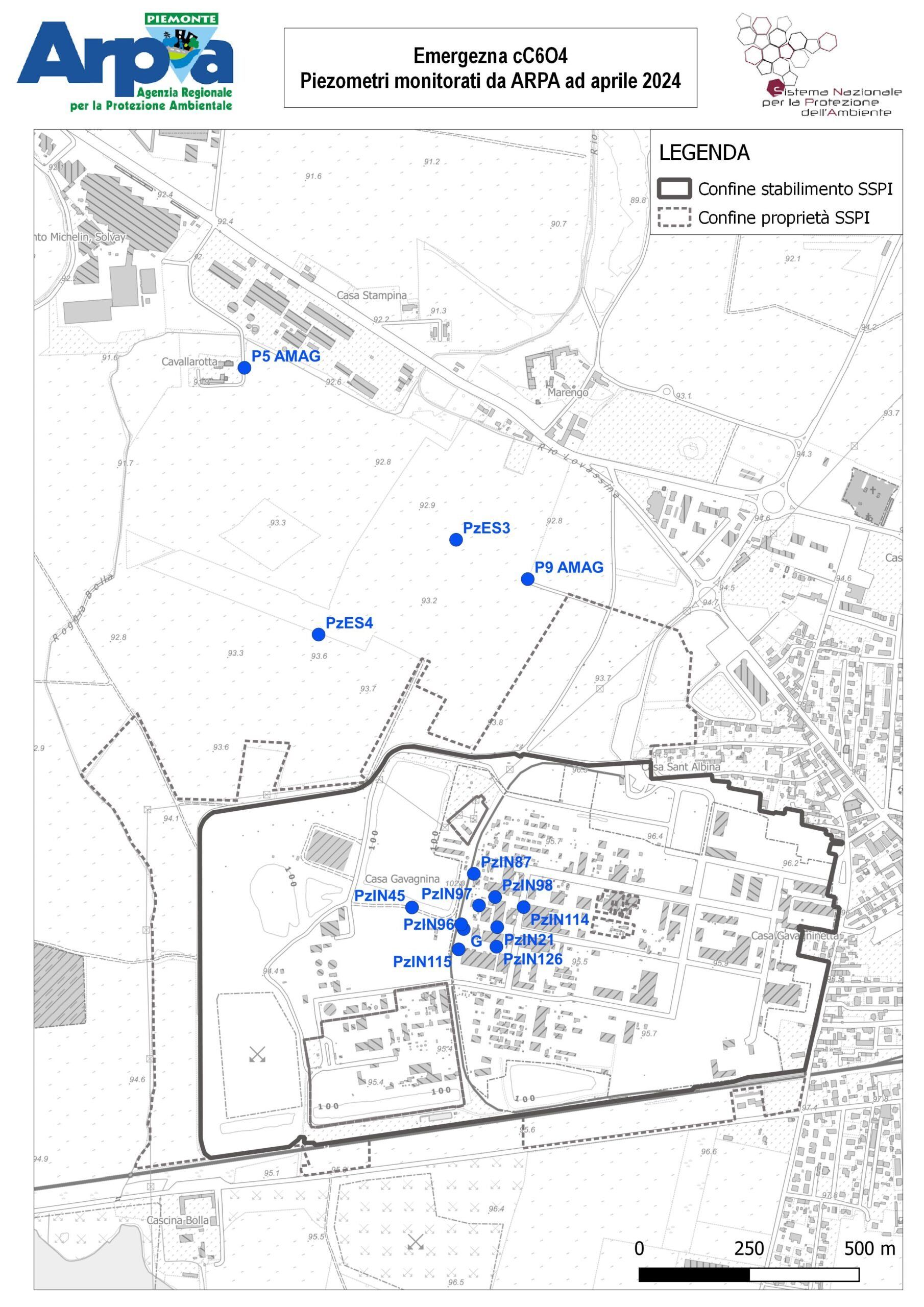ALEXANDRIA – “The foams found on 13 April at the point of entry of the discharge of the chemical hub in Bormida are objectively attributable to the plant”. This is the position of Harp Piedmont with respect to the matter that emerged last Saturday in light of the results of the Agency’s analysis, released this Friday. A consideration that belies Syensqo’s position.
“Regarding the foams in Bormida we checked in last Saturday’s championships the presence of surfactants with and without Pfas“ the regional director of Arpa underlined to Radio Gold According to Barbero “as a quantity we can say that they were double the concentrations detected in January. The values we found are associated with the foams seen in the Bormida the fact that they largely derived from the plant’s waste. We are able to affirm a direct correlation. The data certifies that the foams come from Syensqo. The numbers, however, are not particularly critical. However, the values obtained respect the maximum concentration limits foreseen at the discharge”.
“Regard the anomalous presence of C6o4 we have a series of samples collected over several days” continued the regional director of Arpa “on April 11th (when this critical issue was communicated), on April 16th and 18th. On April 11, a very high presence of c6o4 was revealed in a well at the plant, values above all those found in the past. In the analyzes of 16 and 18 April, a significant reduction in this concentration was highlighted, although it remained at very high values. This accident resulted in a significant increase in C6o4 in the groundwater inside the plant but this quantity was reduced in the following days. Outside the plant we found a quantity similar to the samplings of previous years: at the moment, therefore, there appear to be no significant effects outside the company. However, we will continue to carry out further sampling outside the company: the propagation of these pollutants can take time. In both of these events pthat is to say that there was an anomaly but, based on the data we have processed, it emerged that it remained limited within the system. At the moment there is no evidence of significant effects on the groundwater outside the plant.”
Listen to the full interview with the director of Arpa Piemonte According to Barbero
Below are the detailed results of Arpa’s analyses.
FOAM ON THE BORMID OF 13 APRIL
Arpa technicians went to the site and took several samples both at the discharge point of the Bormida River and internally at the site. The analytical set applied for the search for pfas is shown in the table.
“The results of the samples taken from the A101B tank, the P1 well and the discharge point in Bormida (weir) are reported below, as regards the total surfactant parameters (non-PFAS) and the PFAS parameters, only for the compounds for which at least one value above the limit of quantification (LOQ) was measured. If the result is lower than the LOQ, nr is indicated (not detected). For the ADV family (MFS) the data of the sum of the individual isomers (MFS-XX) performed with the medium bound criterion is reported.
“The data” underlines Arpa “show the presence of total surfactants (non-PFAS) in wastewater samples, collected both internally at the plant (pre-tank A101B and well P1) and at the overflow point of the P4 drain into the Bormida River. The values are included in the range between 0.7 and 2 mg/l. The sampling carried out by Arpa in the last ordinary check which took place on January 23rd had detected concentrations of total surfactants equal to 0.3 mg/l at point P1 and not detected at point P4 (final discharge sump, from which the water converges to the spillway into the Bormida River). The limit value set by national legislation for the total surfactant parameter in waste water in a body of water is 2 mg/l.”
As for PFASit is found “the presence of PFOA in all samples, with higher values in the points inside the plant (0.27 µg/l in pre-tank A101B and 0.31 µg/l in well P1) compared to the discharge point (weir) in the Bormida River (0.11 µg/l). Similarly, the presence of ADV is found (MFS) in all samples, with values equal to 0.7 µg/l in the 2 points inside the plant and 0.4 µg/l at the discharge point. cC6O4 was found only in the 2 points inside the plant (pre-tank A101B and well P1), in concentrations of the order of 1 µg/l”.
The sampling carried out by Arpa on 23 January had returned, for point P1, concentrations of PFOA equal to 0.39 µg/l and cC6O4 equal to 0.49 µg/l, while ADV had not been detected (<0. 4 µg/l). Therefore, in the face of a "stationary" situation for PFOA, in the samples from April 13th, cC6O4 and ADV values almost doubled compared to the data from January 23rd 2024.
The current limits established by regional legislation for PFAS in waste water are respectively: PFOA = 0.30 µg/l, cC604 = 3.5 µg/l and ADV = 0.5 µg/l. It is specified that based on provincial authorization decisions, the limits for PFAS apply only to point P4 (final discharge pit) on an average 24-hour sample, while the limits for the other parameters established by national legislation for industrial waste water in a body of water they already apply to point P1 as well.
“The foams found on 13 April at the point of entry of the discharge of the chemical hub in Bormida are objectively attributable to the plant as from the results of the analyzes it was determined that the waste water of the Bormida Chemical Center contains concentrations of surfactants and cC6O4 at ADV that have almost doubled compared to the last ordinary control compared to January”.
ABNORMAL CONCENTRATIONS of cC6O4 IN THE SURFACE AQUITA
After abnormal concentrations of cC6O4 revealed following the ordinary monitoring bell carried out on March 21st, Arpa began an extraordinary monitoring campaign on April 11th.

The agency has currently created three campaigns: on April 11, 16 and 18 with groundwater sampling at surface aquifer monitoring points.

These are the points monitored by Arpa in the extraordinary monitoring campaigns on 11, 16, 18 April 2024.

The analyzes conducted by Arpa have made a record “the anomalous increase in the concentration of cC6O4 in the PzIN96 and PzIN115 piezometers internal to the site in the quarterly campaign of March 2024 (withdrawals of 03/21/2024). The sampling conducted in the extraordinary monitoring campaign of 04/11/2024 returns PzIN96 and PzIN115 for the same internal piezometers even higher cC6O4 concentrations. It is highlighted in correspondence with the internal piezometer G (not part of the site’s ordinary monitoring network for PFAS) a peak concentration, close to 200,000 µg/l”.
The results refer to the sampling carried out by Arpa on 16 April 2024 “show for the internal piezometers PzIN96 and PzIN115 cC6O4 concentrations of the same order of magnitude compared to data from 11 April 2024; it registers instead a decrease in concentration of one order of magnitude in the piezometer G. With regard to the area outside the perimeter of the factorythe piezometers sampled on 11 and 16 April 2024 show cC6O4 concentration levels substantially in line with the historical series of recent years. It is reported in correspondence with PzES4 a slight increase in concentration compared to the values of the ordinary monitoring campaigns of recent years. Based on the results found, the Agency will continue to carry out further monitoring in the coming weeks to verify the environmental situation in the aquifer outside the plant”.








